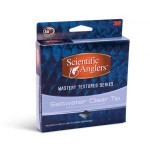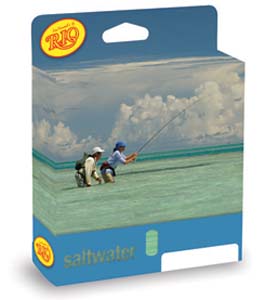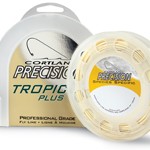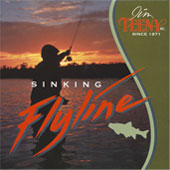By Skip Clement
The correct combination of fly rod, reel, fly line, leader, fly and how to wiggle it, as well as knowing how to catch the fish you’re pursuing are the entirety of fly fishing in any venue. However, to know where to fish, hire a guide or captain.
 [dropcap]B[/dropcap]efore I worked at the Fly Shop of Ft. Lauderdale, I’d traveled the world angling for everything from grayling to salmon to sailfish and peacocks on a fly – and pretty much thought I knew a lot, and I guess I do. However, fly shop folks generally know more about the technologies that go into a fly line and why a particular line is more preferable than another – given the use you’re intending it for. Too, the endless variations in fly lines is now mind-boggling and unless you’re a guide or have the wherewithal to pursue a lifestyle of just fly fishing your days away, then a little humbleness might be rewarding. Visit you local fly shop so they can interpret what is written in PDF’s by fly line manufacturers. All of the latter came crashing down on me, and I’d only been out of the fly fishing “market” for little more than a year.
[dropcap]B[/dropcap]efore I worked at the Fly Shop of Ft. Lauderdale, I’d traveled the world angling for everything from grayling to salmon to sailfish and peacocks on a fly – and pretty much thought I knew a lot, and I guess I do. However, fly shop folks generally know more about the technologies that go into a fly line and why a particular line is more preferable than another – given the use you’re intending it for. Too, the endless variations in fly lines is now mind-boggling and unless you’re a guide or have the wherewithal to pursue a lifestyle of just fly fishing your days away, then a little humbleness might be rewarding. Visit you local fly shop so they can interpret what is written in PDF’s by fly line manufacturers. All of the latter came crashing down on me, and I’d only been out of the fly fishing “market” for little more than a year.
Here’s what happened. I was thumbing through online PDFs of various fly line manufacturers catalogues in order to choose two for my new 10-weight and 9-weight. I was overwhelmed – I’d have to choose from mind boggling corporate ad jargon as well as dozens and dozens of specs for each line.
Confusing and ridiculous
I knew just about what I wanted before I started out but got stuck in the mud going through the minutia of about 2o different possibilities. Then it dawned on me. It was downright ridiculous. For example, what’s the difference between a bonefish taper and a redfish taper? Well, so little that there isn’t anyone I know, including Lefty Kreh, Chico Fernandez or Flip Pallot that could tell the difference, and as for a bone or red – “forgetaboutit.”
The Fly Shop
Since we do more and more online buying these days and less and less brick and mortar fly shop buying (sadly), I wondered how could a newcomer (if there actually are any) to fly fishing figure out what line to buy on their own? Probably impossible and surely mistake ridden.
No fault
We can’t blame the manufactures; they need to sell fly lines and they’re only reacting to their own internal testing, marketing departments and responses from sponsored “pros.” A tweak here, nodule there and some new tech phrasology and voilà, we’ve got a new fly line that will specifically aid in catching . . . whatever.
Need to know
Fly lines are typically 90-to 110-feet; the fly line weights for saltwater are generally considered to be 7-weight to 12-weight and those weight designations are the grams that the fly line actually weighs in its first 30-feet (+/-). For example, a 7-weight fly line should be 185 grams and a 12-weight line should be 380 grams
Match or overline?
In most cases, fly line should match the corresponding weight number of your fly rod. That said, you also need to consider these other options: a traditional fly line weight forward (WF) floating and a WF intermediate sinking line (sink at the rate of 1.5 to 2.0 inches per second). The thicker forward diameter of the WF line of approximately 40-feet will help load the rod and produce the maximum distance and accuracy, especially for beginners. Other considerations are: cold weather or tropical, fresh water or saltwater, fast sinking (greater line density), clear or colored, textured orsmooth and, of course, line weight matching the rod or overlining by one weight. NOTE: The better quality rods are designed for at least two line weights.
Also, the coatings of modern day fly lines are much better than they were just a few years ago; super smooth, UV resistant, won’t crack or absorb water and durable beyond a few years. However, if you’re fishing 200 days a year, chances are you’ll need a new coil sooner.






